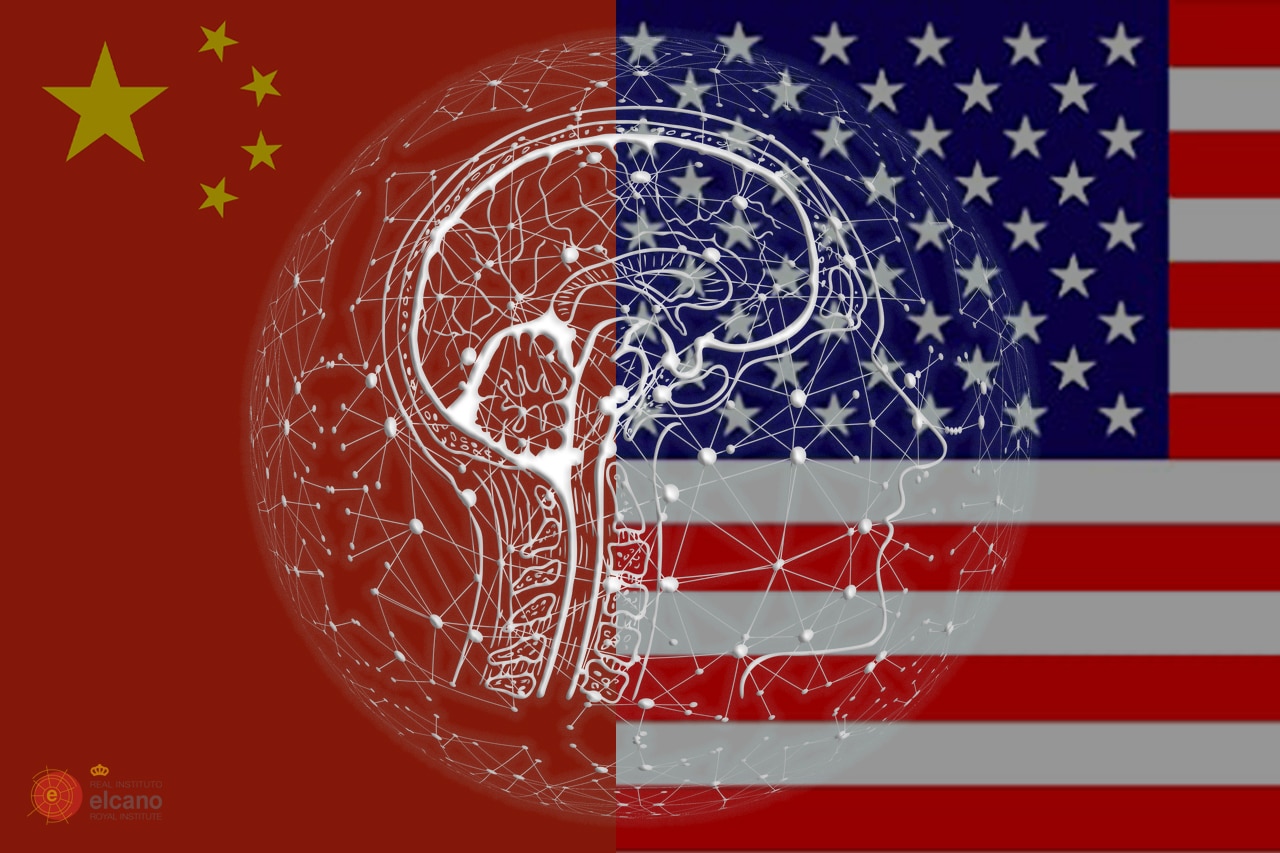
In the bipolar rivalry between the US and China, where Europe is more of a stage than an actor, the ideological dimension is playing an ever-increasing role. This applies to China, the US (Trump and Biden) and to Europe. The repression of the Uyghurs in Xinjiang and the new security law in Hong Kong have placed ideological differences under a new spotlight. And they also provide a lever for slowing China’s technological advances. Techno-nationalism is imposing itself both in China and in the US.
The ideological factor may bolster the geopolitical one to generate a formal or informal coalition against China, despite the fact that Europe is looking for its Sinatra Doctrine (My Way). A possible case in point is the OECD’s Global Partnership for AI, aimed at ensuring artificial intelligence (AI) is used in a responsible way that respects human rights and democracy. Europe itself is not blameless. Amnesty International has denounced three European AI companies for exporting surveillance technology to China. The EU is reviewing its rules on double-use technologies in this area. It should be noted that 50% of the world’s countries allow the use of facial recognition techniques, whether by government agencies or private businesses (or both working together).
This ideological rivalry is quite distinct from the one that pitted the West against the Soviet Union during the Cold War, where, in addition to the strategic-military standoff, the economic and social model was in dispute, and Moscow could rely –although not universally, particularly in certain phases– on the obedience of certain Western communist parties, organised on an international scale. When tensions between Beijing and Moscow flared there were even pro-Chinese communist parties. All this follows the naivety and misguidedness of Western analysis in thinking that the opening up and development of the Chinese economy would lead to a liberalisation of its political system. Furthermore, the attacks on China reinforce its nationalism (one of the most pugnacious, followed by the US), an ideological factor used by the Chinese Communist Party to quell any outbreaks of liberalism.
The Chinese model is the reflection of a historical reality, and cannot be exported because, among other reasons, as Fidel Sendagorta points out in his Estrategias de poder (China, Estados Unidos y Europa en la era de la gran rivalidad), it is based on a meritocratic system, a disciplined party, a strong work ethic and an emphasis on education as a means of climbing the social ladder, although it should be added that there are also ascents, not least Xi Jinping’s, that have proved permanent for some social groups. Ideology extends beyond this. Environmental policy also contains a significant element of ideology, and here, despite the fact that China is a considerable polluter, Europe is closer to China than the US –Xi Jinping has declared 2060 the deadline for carbon neutrality– although this imbalance may change if Biden gets into the White House and the Democrats are able to increase their power in Congress.
There is no Comintern of parties, but Beijing is constructing a network of pro-Chinese interests and influences, wooing certain countries (with investments and trade) bilaterally or via a huge infrastructure programme, the Belt and Road Initiative, also known as the New Silk Road, a vast gamble of geopolitical engineering. China’s influence over Hollywood grows by the day, especially because it is becoming the largest market outside the US for the studios’ output. They all possess enormous propaganda machines, particularly now with the rise of social media and their manipulation (misinformation). Xi Jinping has offered Chinese support as a ‘new option for other countries who want to speed up their development while preserving their independence’.
But while the regime is not exportable, some of its characteristics certainly are, such as the use of new technologies in combination with the insights of psychology and neuroscience, not only in terms of surveillance (others do likewise), but also in terms of organising the authoritarian system. It is techno-authoritarianism, a new brand of political governance. Thus, apart from the fact that it is a basic way each has of dominating the other, technology has also been playing an essential role not only in the geopolitical debate but also in the ideological one.
Some analysts, such as Elbridge Colby and Robert Kaplan, argue that inserting ideology into relations with China could induce the US into committing strategic errors, as it was induced during the Cold War into the calamitous Vietnam War. But they also acknowledge, as Kurt Campbell and Jake Sullivan did some time ago, that ‘China may ultimately present a stronger ideological challenge than the Soviet Union did… China’s rise to superpower status will exert a pull toward autocracy. China’s fusion of authoritarian capitalism and digital surveillance may prove more durable and attractive than Marxism’.
It is not a one-way street. On the Chinese side there is a certain fear of contagion, of Western ideas of democracy and human rights infiltrating their way into its own socio-political fabric, and it is vigilant to ensure this does not happen. The Chinese regime not only rejects liberal democracy, it even scorns it. It is true that the idea of Western democracy has not been enjoying its finest hour of late, even before COVID struck and more obviously with the management of the pandemic’s effects. China has taken the lead in terms of economic recovery. That said, the pandemic and its origins have seen China’s image take a major blow in Europe, according to polls conducted by both the ECFR and Pew, while Europe’s image has also been dented abroad, and the US under Trump has suffered even worse.
The ideological debate with China increasingly revolves around values, although behind it there lurk the realities of power. The battles of narratives and the imbalances of perceptions are important. Ideas and ideologies also play an influential role.


